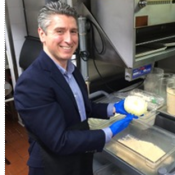Turning Pain Points into Strengths: How to Create a 360-Degree Dining Experience
4 Min Read By David Alvarado
The pandemic has devastated the restaurant industry, with profitability and staffing levels down for the vast majority of restaurant operators. As COVID-19 restrictions are lifted and the hospitality industry begins to reemerge, now is the time for restaurants to look at how to turn their pain points into strengths through technology.
Restaurants should ask themselves the following question: as customers return to dining out, how can we keep not only our guests—but staff—happy?
There are three critical performance metrics that restaurants should take into consideration to create a “360-degree dining experience” for guests, staff members, and operators: table turns, tips and satisfaction, and average check size.
Table Turns: Guests Have the Remote Control
Table turns are one of the most important performance metrics for a restaurant. It is a constant balancing act to maintain an optimal turnover rate—one that is long enough to allow guests to enjoy their dining experience and not feel rushed, yet short enough to maximize revenue and ensure new parties don’t have to wait a long time to be seated. With the rise of guest-facing app-less technologies, patrons are now driving a new level of time management—all by themselves. It’s dining, on demand.
As soon as they sit down, guests can pull up the menu on their phone and review it at their leisure—they can even place an order without flagging down their server. When they’re finished enjoying their meal, they are able to split and pay the check at their convenience, removing the cumbersome process of waiting to pay altogether. All of that shaves off a significant number of minutes, especially in the crucial peak hours.
Not only are guests increasing the rate of table turns, but they are leaving more satisfied. With the rise of online shopping, customers are now more than used to controlling their experience and their time more than ever. With these technologies, customers can dictate when they leave after a meal, instead of waiting for the server. We’ve all found ourselves in a situation where we are ready to pay for our check and the server is nowhere to be found—this can put a damper on an otherwise excellent dining experience. The payment experience once had the power to leave guests with a sour taste in their mouths, but now, having remote control—guests leave feeling delighted.
Tips and Satisfaction: The Role of the Server Is Transforming
Restaurant workers have reported dramatically decreased tips during the pandemic, with more than three quarters (76 percent) considering leaving the industry due to low wages and tips. When innovative, guest focused technology is implemented, some individual venues have seen up to 40 percent consistently higher tips than the restaurants that didn’t adopt the technology.
When servers are spread too thin, the tip size decreases—but when pain points like waiting for a menu or check are removed through the use of customer-controlled technology, servers can be more attentive where it matters and add real value to the guests’ experience. In turn, the role of the server is transformed into one that is less frantic, more rewarding, and creates satisfaction for both parties involved in the transaction.
When server issues are addressed and supported to provide optimal customer experience, operators can save tens of thousands of dollars annually in the cost of hiring and retaining staff alone. The increased tips that servers earn is one factor, but through guest-facing technology, restaurants can also collect customer feedback via a brief post-payment survey. This feedback can be communicated to the servers in real time and can provide training and recommendations for improvement, for themselves individually but also general feedback about the dining experience that can radically streamline operations based on actual data.
How Can Restaurants Increase the Average Check Size? By Capturing the Guest Impulse
In a traditional dining scenario, guests review a paper menu (often without images) upon being seated, place an order, and the menu is promptly taken away. While this has been accepted as the norm, it limits opportunities for additional spend. For instance, a guest may want to order a specialty cocktail during their meal, but without being able to peruse the menu, they may decide to forgo it. With a digital menu, not only can guests view items at any time, but the menu can also provide a “pairs well with” option that increases the check size and potential tip value.
Digital, always-present menus also provide rich imagery and ample details that enhance the menu items’ appeal. Guests are also able to filter items for dietary restrictions (such as vegan or gluten-free options), and order at any time on their phones—even when the server is not around. This allows guests to be more impulsive, and ultimately the average check size rises.
1 +1 + 1 Is More Than 3
While these three metrics can be assessed individually, when all three are combined, everyone wins. By removing customer challenges like waiting for a menu or paying for a check, we can achieve higher guest control and satisfaction. This leads to higher tips—which, in turn, leads to more engaged and happier staff. This ultimately results in lower turnover and savings for operators. Turning pain points into strengths allows restaurant operators to focus on all of the other factors that allow them to deliver hospitality that goes above and beyond, truly creating a full “360-degree dining experience” for all involved.


